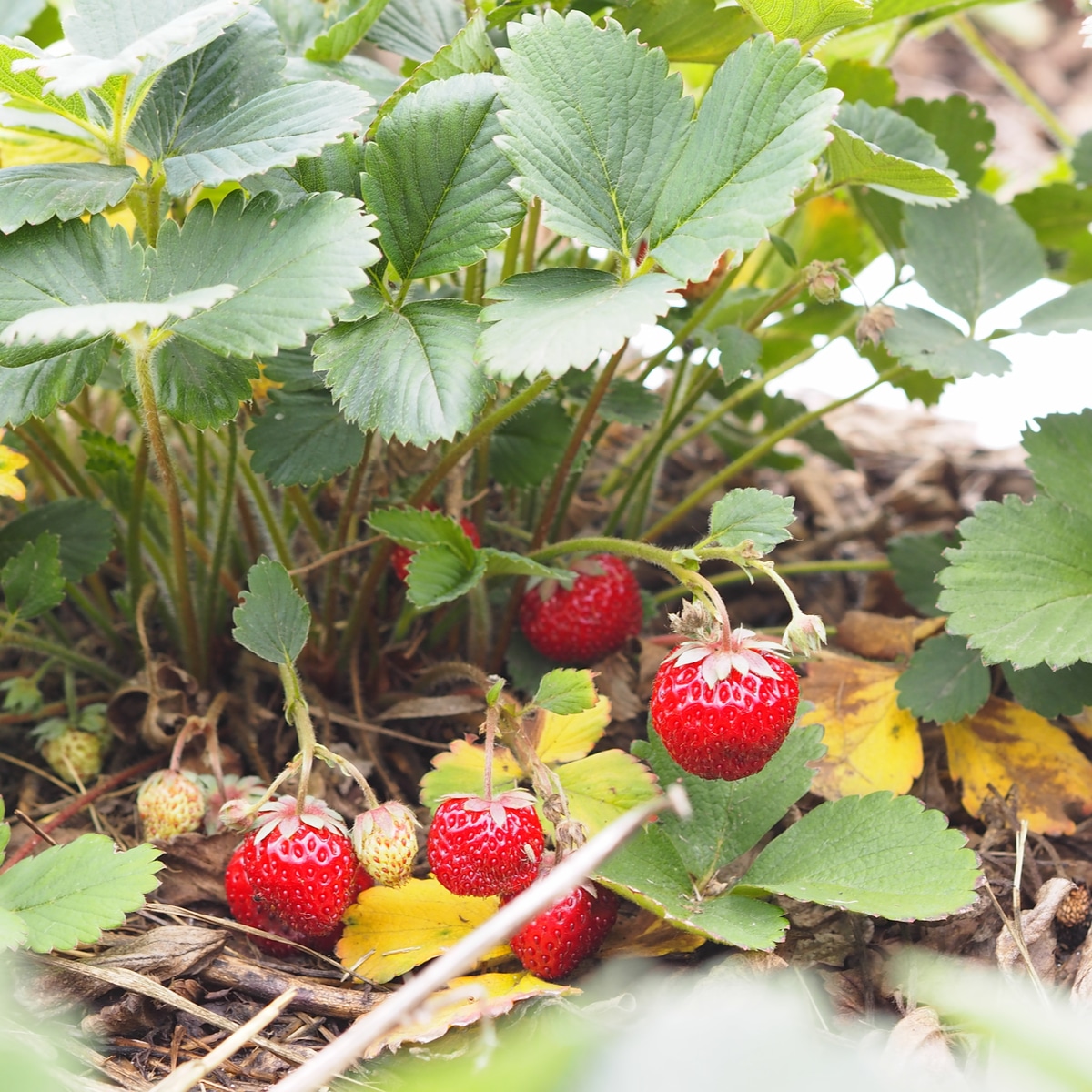To make strawberries grow larger, provide adequate sunlight, regular watering, and nutrient-rich soil. Growing your own strawberries can be a rewarding experience, especially when you’re able to harvest plump and juicy fruits.
If you’ve ever wondered how to make your strawberries grow larger, you’re in the right place. We will share some valuable tips and techniques to help your strawberries reach their fullest potential. By providing them with the right amount of sunlight, water, and soil nutrients, you can enhance their growth and boost their size.
So, let’s dive in and discover the secrets to growing big, beautiful strawberries in your own garden.

Credit: strawberryplants.org
How to Make My Strawberries Grow Larger: Step by Step Guide
Choosing The Right Strawberry Varieties
When you want to make your strawberries grow larger, selecting the right strawberry varieties is crucial. Choose high-yield strawberry varieties that are known for producing larger fruits. Look for varieties that have optimum characteristics for larger strawberries, such as large fruit size, good flavor, and high yield. These varieties are usually labeled as “big fruit” or “giant fruit” varieties. Some popular high-yield strawberry varieties include Earliglow, Allstar, Chandler, and Seascape. These varieties are known for their ability to produce large, juicy strawberries.
Providing Optimal Growing Conditions
For larger strawberries, it is crucial to provide optimal growing conditions. The first factor to consider is the sunlight requirements. Strawberries thrive in full sunlight, so make sure to choose a location that receives at least six to eight hours of direct sunlight each day.
The soil composition and pH levels also play a vital role in the size of your strawberries. They prefer well-drained soil that is rich in organic matter. Additionally, maintain a pH level between 5.5 and 6.5 to create the ideal environment for their growth.
In terms of watering, it is essential to provide consistent moisture without overwatering. Too much water can lead to shallow root growth and smaller fruits. Water deeply once a week, ensuring the soil is moist but not waterlogged.
- Strawberries require six to eight hours of sunlight daily for optimal growth.
- Choose well-drained soil rich in organic matter with a pH level between 5.5 and 6.5.
- Water deeply once a week, maintaining consistent moisture without overwatering.
Implementing Proper Care And Maintenance
Implementing proper care and maintenance is key to achieving larger strawberries. Managing strawberry pests and diseases is essential to ensure that your plants remain healthy and productive. Regularly inspect your plants for signs of pests such as aphids, mites, or slugs, and take immediate action to control their populations. Consider introducing beneficial insects like ladybugs or lacewings to naturally manage these pests. Additionally, applying organic insecticides or using physical barriers can be effective methods of prevention.
To promote larger fruit growth, it is important to apply proper pruning techniques. Regularly remove any dead or damaged leaves, runners, or flowers to direct the plant’s energy to fruit production. This also allows better airflow and sunlight penetration, reducing the risk of fungal diseases. Additionally, thinning the number of fruit clusters can redirect the plant’s energy to fewer fruits, resulting in larger ones.
Proper fertilization methods are also crucial for promoting strawberry growth. Apply a balanced organic fertilizer, high in nitrogen, phosphorus, and potassium, at regular intervals during the growing season. This provides essential nutrients to the plants and supports healthy fruit development. Avoid over-fertilization, as it can lead to excessive foliage growth at the expense of fruit production.
In summary, managing pests and diseases, implementing proper pruning techniques, and utilizing appropriate fertilization methods are key factors in growing larger strawberries. With these practices in place, you can enjoy a bountiful harvest of plump and delicious fruits.
Enhancing Pollination For Bigger Strawberries
Efficient pollination plays a vital role in the growth and size of strawberries. It is crucial to grasp the significance of this process to ensure optimal fruit development.
To enhance pollination in your garden, create an inviting environment for pollinators. Planting a variety of flowers with vibrant colors will attract bees, butterflies, and other beneficial insects. Providing a water source and avoiding harmful pesticides are also essential to support a healthy pollinator population.
If pollinators are scarce, or you simply want to boost fruit size, hand pollination can be a valuable technique. Gently transferring pollen from the male to the female part of the flower using a small brush or cotton swab can help ensure successful pollination and larger strawberries.
Harvesting And Storing Large Strawberries
Harvesting strawberries at the right time is essential for maximizing fruit size. To identify the perfect moment to pick, look for these clues:
- Color: Ripe strawberries should have a vibrant red color, whereas underripe ones will appear light pink or green in certain areas.
- Texture: Gently touch the strawberries; they should be firm but not too hard. Soft or mushy ones are likely overripe.
- Aroma: Ripe strawberries emit a sweet and fragrant smell. Trust your nose to determine their readiness.
Once you’ve picked the strawberries, it’s crucial to handle them with care.
| Harvesting Techniques | Storing Techniques |
|---|---|
| Use pruning shears or scissors to cut the stem about half an inch above the cap of the strawberry. | Sort the strawberries, removing any damaged or moldy ones. |
| Avoid pulling the strawberries, as this can damage the plant and decrease future yields. | Gently place the strawberries in a shallow container lined with paper towels to absorb excess moisture. |
| Avoid stacking or overcrowding the strawberries, as this can lead to bruising and spoilage. | Keep the container in the refrigerator to maintain freshness. |
By following these techniques, you can ensure that your harvested strawberries remain large, fresh, and delicious for longer periods.
Frequently Asked Questions For How To Make My Strawberries Grow Larger
How Can I Make My Strawberries Grow Larger?
To make your strawberries grow larger, ensure they receive at least 6 hours of sunlight daily, provide adequate water, and use a balanced fertilizer. Pruning the runners and removing any diseased plants will also promote larger fruit. Additionally, mulching around the plants can help control weeds and maintain soil moisture.
What Are The Best Methods For Watering Strawberries?
Water your strawberries deeply but infrequently, aiming for about 1 to 1. 5 inches of water per week. It’s important to water at the root zone and avoid wetting the leaves to prevent fungal diseases. Consider using soaker hoses or drip irrigation systems to deliver water directly to the plants’ base, ensuring efficient and even watering.
When Is The Best Time To Fertilize Strawberries?
The best time to fertilize strawberries is in early spring before new growth begins. Use a balanced fertilizer with equal parts nitrogen, phosphorous, and potassium. Apply the fertilizer at a rate of one pound per 100 square feet of garden space, ensuring it is well-incorporated into the soil.
Avoid overfertilization, as it can lead to excessive foliage growth and smaller fruit.
Conclusion
To sum it up, these simple tips can help you grow larger strawberries in your garden. Firstly, ensure proper soil preparation and regular fertilization. Secondly, maintain consistent watering and provide adequate sunlight. Thirdly, protect your plants from pests and diseases.
By following these guidelines, you can enjoy a bountiful harvest of big, juicy strawberries that will delight both your taste buds and your eyes. Happy gardening!

